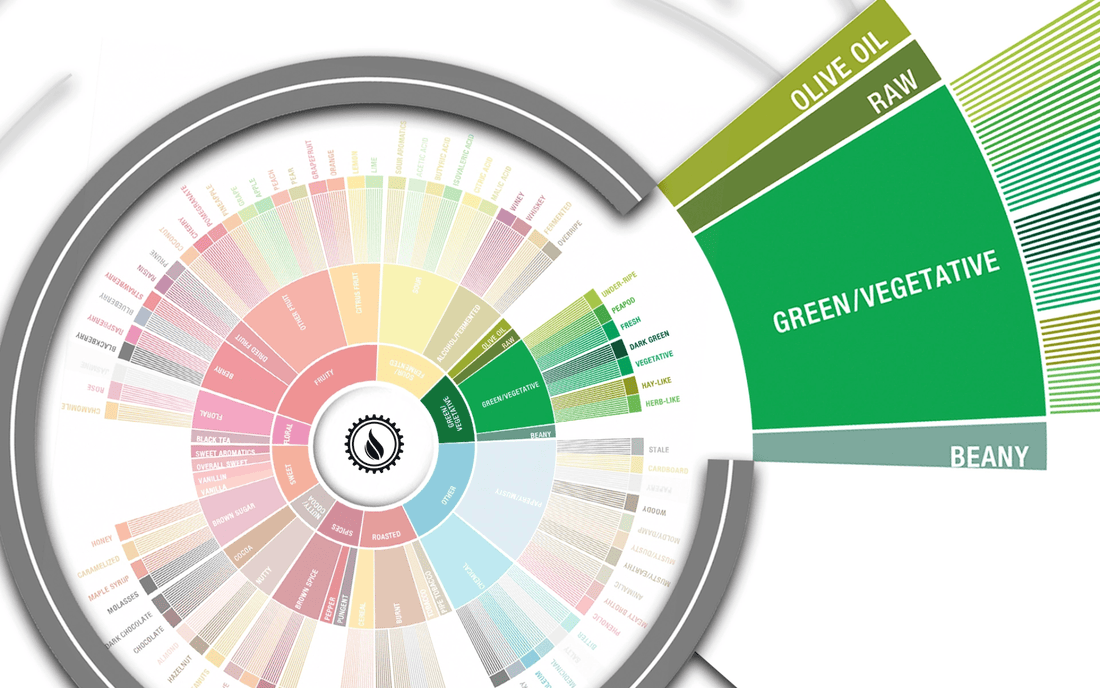
Deep Dive: Green & Vegetative Flavors in Coffee
The green and vegetative segment of the coffee flavor wheel brings fresh, savory, and sometimes challenging notes to your cup. While many coffee lovers immediately recognize sweetness or fruit, these vegetative descriptors—like cut grass, fresh herbs, green bell pepper, tomato stem, or pea pod—remind us that coffee is ultimately the seed of a living plant. Understanding these flavors can deepen your appreciation of specialty coffee and help you select single origin coffees that showcase terroir rather than roast.
What Causes Vegetative Flavors?
Vegetative notes are driven by compounds naturally abundant in green coffee beans. Chlorogenic acids and aldehydes—especially methoxypyrazines—produce aromas that echo bell pepper and fresh herbs. The concentration of these molecules varies with variety, altitude, harvest time, and especially how the coffee is processed and roasted. Washed coffees, for example, often highlight leafy or herbal notes, while natural processes tend to mask them with fruit sugars. Lighter or medium roasts can preserve pleasant, herbaceous hints, while under-roasting or using unripe beans can create raw, grassy, or even beany flavors that are usually considered defects.
Recognizing Green & Vegetative Nuance
Not all green or vegetative flavors are negative. Positive expressions include fresh herbs (like parsley or basil), cut grass, and green bell pepper—these can add complexity, especially in high-altitude coffees. Less desirable are flavors like raw bean, wet hay, or stale vegetable, which often indicate issues with processing, roasting, or storage. Tasting coffees side by side helps train your palate to spot the difference between nuanced herbaceous notes and off-putting grassy defects. The coffee taster’s flavor wheel is an excellent visual tool to guide your exploration.
Brewing Tips for Herbaceous Coffees
To highlight green notes, smell the dry grounds for aromas of grass, hay, or herbs, then pay attention during brewing—pour-over methods like V60, Chemex, or AeroPress often bring out subtle vegetative tones. Lighter roasts from small batch coffee roasters typically preserve these characteristics best. Control your brewing variables: use fresh roasted coffee beans, filtered water just off the boil, and avoid over-extracting, which can pull unpleasant bitter or astringent flavors.
Why It Matters
Vegetative flavors expand the spectrum of coffee experience beyond sweetness and fruit. They can be a sign of careful farming and highlight a coffee’s unique origin—shade-grown beans from Ethiopia or highland Guatemala often display herbaceous complexity. Appreciating these notes makes you a more discerning buyer when browsing Florida coffee roasters, craft coffee roasters, or direct trade coffee options. For a full breakdown of how green and vegetative flavors fit into the big picture, see our main guide Exploring the Coffee Taster’s Flavor Wheel. Ready to taste herb-forward brews?
Explore seasonal offerings at Steel Oak Coffee—our ethically sourced coffees sometimes feature lightly roasted lots with a gentle herbal edge, perfect for home brewing or as part of a coffee subscription.
